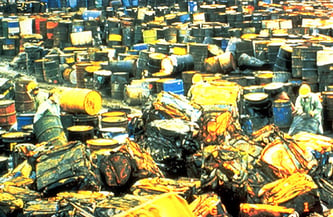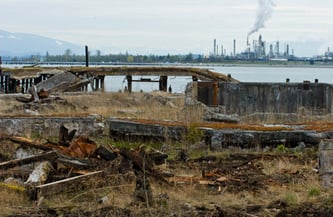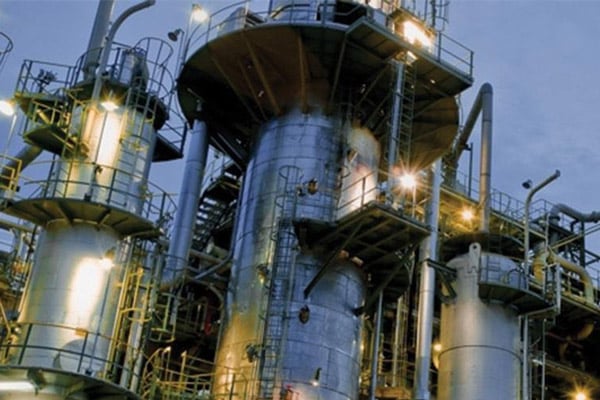During the 19th and 20th centuries America industrialized at unparalleled speeds, creating one of the largest, most advanced economies and societies the world had ever seen. But all that development came at a hefty price. Industrialization produced ever increasing volumes of waste with little knowledge of what to do with it and even less motivation to develop environmentally friendly solutions to dispose of it.
The result?
Companies, utilities, cities, and other waste producers dumped the waste into the land, air, and water. Over time this process presented significant environmental pollution issues. Buried waste, for example, either laid dormant to be discovered later or actively leached contaminants into the environment.
What are Superfund sites?

After several catastrophes in the 1970s, like Love Canal and Valley of the Drums, received national attention, Congress realized the scope of this problem and passed the Comprehensive Environmental Response and Liability Act (CERCLA) in 1980. This act assigned responsibility for cleaning up the waste to the entities that contributed to the problem at abandoned sites. Initially the act provided funding through a ‘Superfund’ tax paid by manufacturers.
Valley of the Drums - Wikimedia Commons

Informally called “Superfund Sites,” thousands of these heavily contaminated sites exist (including manufacturing facilities, processing plants, landfills, and mining sites) throughout the United States where hazardous waste was dumped, left out in the open, or improperly managed in other ways. When a site is added to the Superfund list, it means that the location is so badly contaminated that it is a priority of the EPA to clean it up.
The solution: site remediation
Many polluted sites have been cleaned up since CERCLA was passed, but there are still over 1,300 sites on EPA’s National Priority List. Additionally, many companies own property at current or former manufacturing sites that have not been cleaned up. Sites contaminated with non hazardous waste contribute to what are known as Brownfields. Often these sites are located in areas of cities that are now in demand for redevelopment.
The process of cleaning up these sites is known as remediation, as the site is restored to its pre-contamination state.
Put simply, site remediation is the process of removing polluted or contaminated sediment, soil, surface water, or groundwater in order to limit its effect on the surrounding people and environment. A heavily polluted site can have serious detrimental effects on every level of an ecosystem all the way up to humans, so eliminating that dangerous waste is a critical part of maintaining community health.
How remediation works
As indicated, remediation means removing the hazardous waste from contaminated sites. The question is, what do you do with that waste? Some of it can be treated on site or in situ, yet some must be shipped to offsite facilities for treatment. The most common and effective approach used is landfilling in hazardous waste subtitle C landfills at treatment, storage, and disposal facilities (TSDF).
Often the soil and media are contaminated with chemicals that must be treated prior to landfilling. This treatment is called stabilization, which is a chemical reaction between the waste and a reagent. The process chemically binds the contaminant, so it can no longer leach out of the waste if and when it comes into contact with rainwater in the landfill prior to capping.
Companies and remediation service providers need to look for TSDFs that can provide as many services as possible at one location to increase project efficiency. Some TSDFs provide stabilization, but do not have an adjacent landfill. There may also be wastes needing thermal treatment by incineration. A single site that can provide landfill, stabilization and incineration is highly valued. In addition, a central location connected to rail is also required or at least preferred to help with logistics and cut disposal costs.
The benefits of a single solution
When it comes to keeping project and waste disposal costs under control, location is everything. Veolia owns and operates a treatment complex in Gum Springs, Arkansas that delivers everything that companies handling remediation require. Located approximately 70 miles southwest of Little Rock, this facility is centrally located, served by the Union Pacific Railroad, and is only four miles off Interstate 30 for easy truck access. The complex provides landfill, stabilization, and incineration capabilities all at one site.
Finding ways to dispose and remove waste that keep the environment clean and a business safe from liability is the ultimate goal. This unique treatment complex includes all the necessary components for companies to complete remediation safely, efficiently, and cost effectively. With the help of other environmentally responsible companies dedicated to cleaning up waste, this process is helping to breathe new life into areas throughout the entire United States that were once highly contaminated.



